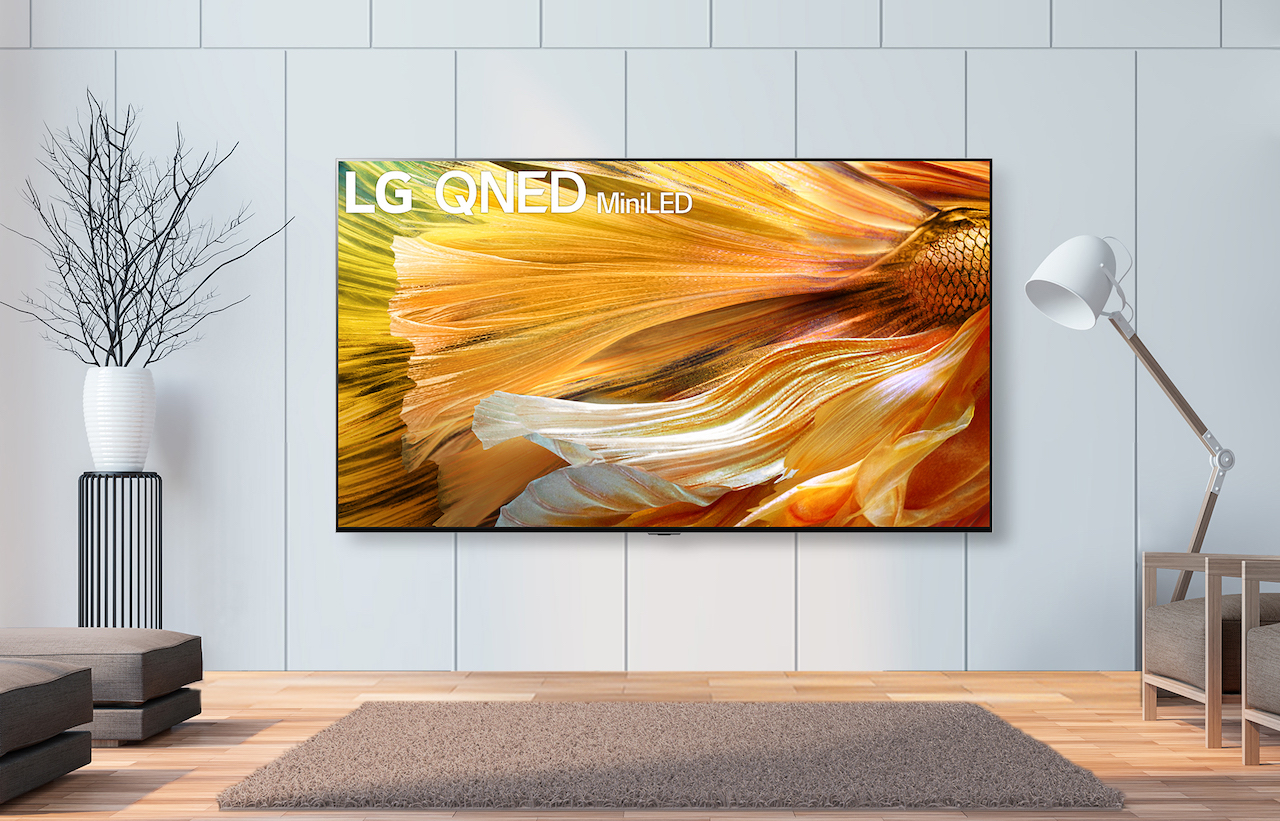What is miniLED TV: should you buy one?

After years of OLED vs QLED wars, a new challenger has emerged. miniLED claims to bridge the gap between the two. But what is miniLED TV, and should you buy one?
Luke Hopewell is a gadget veteran of over 10 years. He’s reviewed over 100 TVs in his time, and been to the magic factory where they’re all made. He’s lost more remotes than he’s found, and if you ask him nicely, he’ll tell you how tech companies get tech writers to review TVs… Got a question for the author? Send me an email!
What is miniLED?
Most TVs are dependent on light to work. Specifically, a light source that illuminates the pixels to produce an image. miniLED TVs are a new type of television that use miniaturised LED technology to improve picture quality and contrast.
Unlike traditional LED TVs, which use large, bulky LEDs behind the panel as their light source, miniLED TVs use thousands of tiny LEDs that are only a few millimetres in size. This allows for a higher density of LEDs. In turn, this allows for better control of the backlight and improved picture quality.

One of the biggest advantages of miniLED TVs is their improved contrast ratio. Because the tiny LEDs can be turned on and off individually, miniLED TVs can produce deeper blacks and brighter whites, resulting in more lifelike images with greater detail and depth.
This is especially noticeable in dark scenes, where miniLED TVs can produce more shadow detail and better contrast than traditional LED TVs.
In terms of picture quality, miniLED TVs fall somewhere between LED TVs and OLED TVs. OLED TVs are widely considered to have the best picture quality of any television, with perfect blacks, wide viewing angles, and excellent colour accuracy. However, miniLED TVs offer many of the same benefits as OLED TVs, such as improved contrast and better viewing angles, at a lower price point.
How is miniLED different to OLED?
miniLED TVs are an evolution of QLED and other LED TV technologies.
miniLED TVs use miniaturised LED lights to create a more detailed and precise backlight for the LCD display. This allows for better contrast and improved picture quality compared to traditional LED TVs. The miniaturised LED lights are arranged in a grid behind the LCD panel, and each light can be individually controlled to provide precise backlighting for different areas of the screen. This allows for a higher level of contrast and more accurate colours.
QLED TVs, on the other hand, use quantum dot technology to enhance the colour accuracy and brightness of the display. Quantum dots are tiny particles that emit different colours of light depending on their size. Light from the backlight is sent through the quantum dots. It’s then converted into highly accurate and vibrant colours. What you get is a display with very good colour accuracy and brightness, and QLED TVs are considered to be some of the best TVs available in terms of picture quality.
Overall, miniLED TVs offer a more detailed and precise backlight compared to traditional LED TVs, while QLED TVs use quantum dot technology to produce highly accurate colours and bright images. Both technologies can result in excellent picture quality, but miniLED TVs may have an advantage in terms of contrast and local dimming capabilities.
Are miniLED TVs cheaper than OLED?
After all of my TV reviews at Redaktor and over the years, I would always recommend an OLED TV. The blacks are unparalleled. They’re wafer-thin and produce some of the best, most vibrant and most accurate colours I’ve ever seen. Unfortunately, they carry a hefty price tag for all that picture. miniLED is a halfway measure between the colour and black depth of OLED and the price point of LED panels.
In terms of gaming and movie-watching, miniLED TVs can offer a significant improvement over traditional LED TVs. The improved contrast and greater detail can make games and movies more immersive and lifelike, and the higher refresh rates of many miniLED TVs can reduce motion blur and make fast-paced action scenes look smoother.
miniLED TVs offer many of the same benefits as OLED TVs, at a lower price point. While they may not offer the same level of picture quality as OLED TVs, they are still a great choice for gaming and movie-watching, and are worth considering if you’re in the market for a new TV.
OLED vs LED vs miniLED: what should you buy?
We’ve been hands on with a few different TVs over the years, and the results are astounding.
At the end of the day, the right TV for you is the one that won’t break the bank. Sure, you can spend the earth on an incredible 8K OLED TV, but unless you have it side-by-side with its competition, you might not notice the differences immediately.
You’ll struggle to get a bad image on an LED TV these days. And you can only improve your experience as you move up the ranks.
Each technology has its drawbacks. For LED, it’s the “ghosting” effect you get around the edge of the screen due to the bulky backlight. With OLED, it’s the price. With miniLED, it’s potentially too bright. When we reviewed LG’s range of miniLED products this year, we found that we had to turn the brightness down. From a distance of about three metres, it was just too bright for evening viewing.
If you’re looking to get OLED contrast without an OLED price tag, miniLED is something you should check out. Just turn the brightness down a few notches first.
Read more
We’ve gone deep on how to get the best TV for your space in our home entertainment guide. Check it out.
Luke Hopewell is the editor and co-founder of Redaktör. He's previously been the Editor of Gizmodo, Founding Editor of Business Insider Australia, Editorial Lead for Twitter Australia and more.


